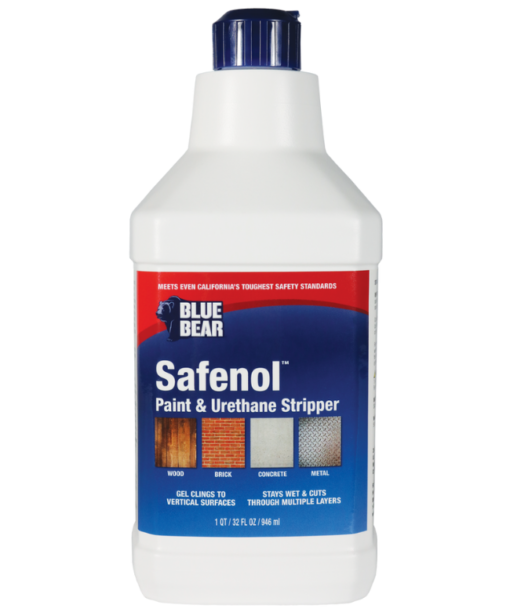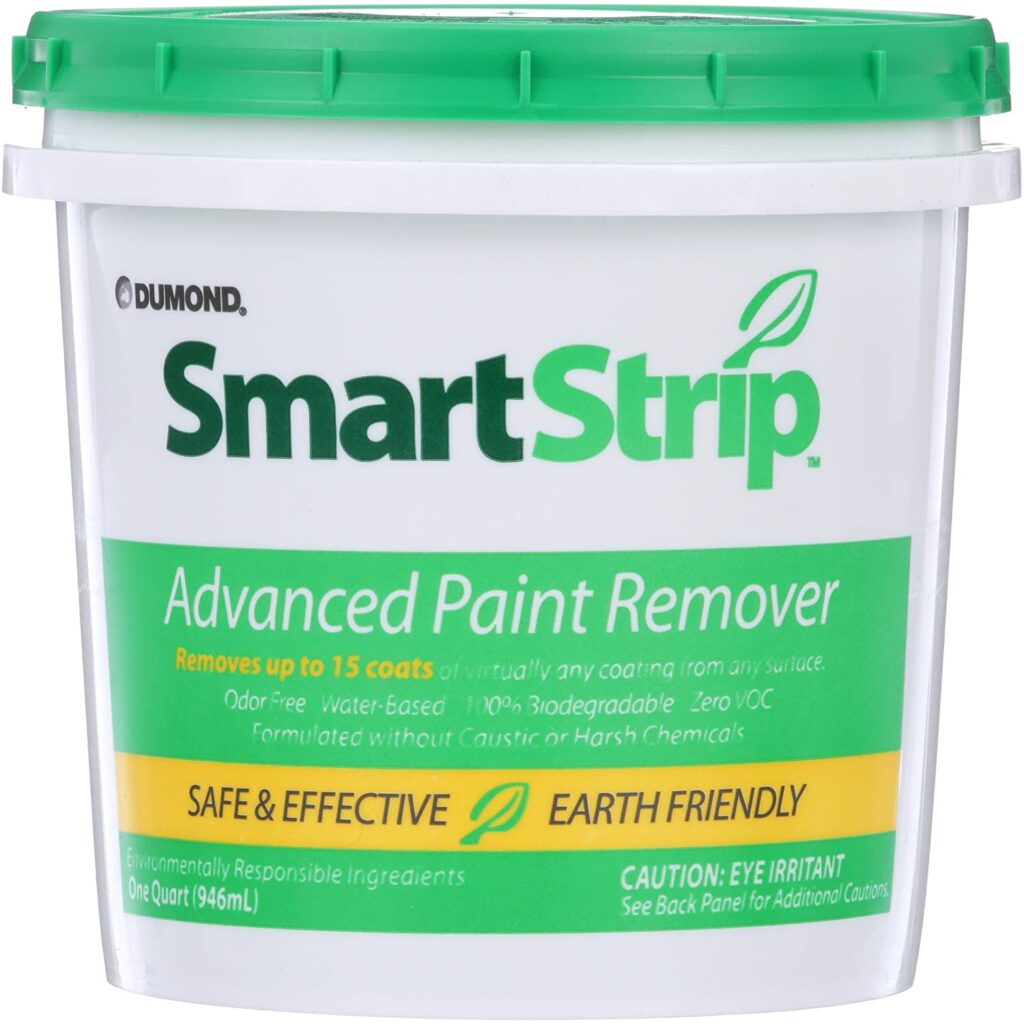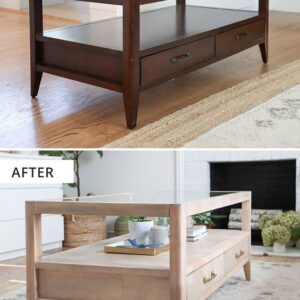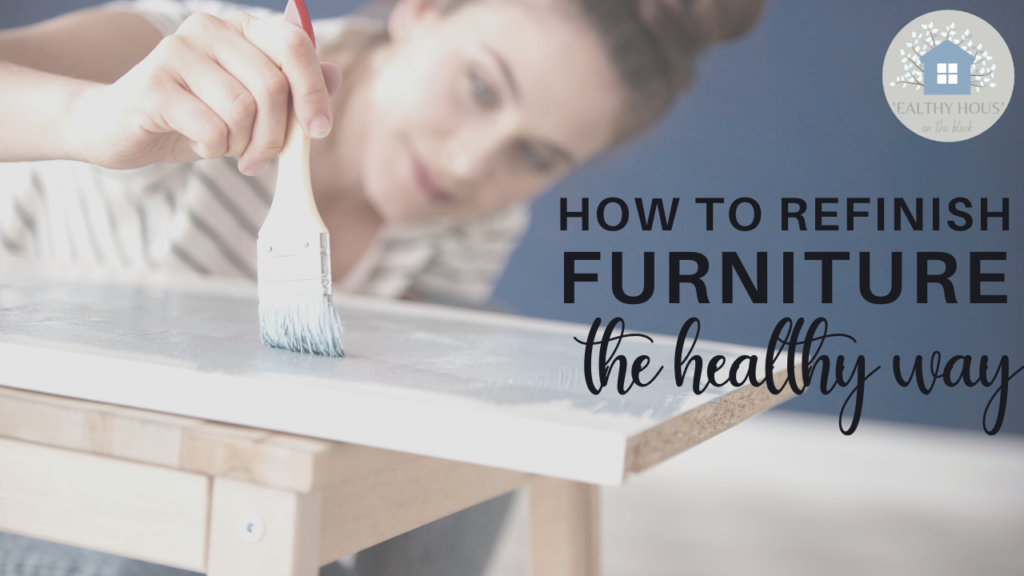
One of my favorite projects has been finding items on Facebook Marketplace or Craigslist and giving them new life. 10 years ago, before my oldest daughter was born, I found a mid century dresser and turned it into a two week long adventure of sanding, painting and staining to my heart’s content. Of course back then I had no idea there was a healthy way to do things like refinish furniture, and I completely missed the mark on natural paint remover options and non toxic paint strippers.
As my spare time has changed over the last ten years with each season of my children, I’ve dabbled here and there with refinishing second hand furniture and giving new purpose to items that were going to be tossed. If you start looking for ways to redo furniture, you’ll find there can be a lot more changes you make to it besides just repairing the wood.
My instagram account as of late has been focused on these gorgeous furniture makeovers that involve adding texture, hardware and colors. The great thing is you don’t have to shy away from these projects at all. You can do them completely safely and make them 100% healthy for your home. The first step is finding a natural paint remover that will get your project going.
This week’s blog post is going to focus on:
- How to purchase second hand furniture and home furnishings
- How to set up your project the right way
- Natural paint removers and non toxic stain removers
- My favorite non toxic paints, stains and sealers
- Showcase of some of my favorite projects you could copy with your own healthy spin
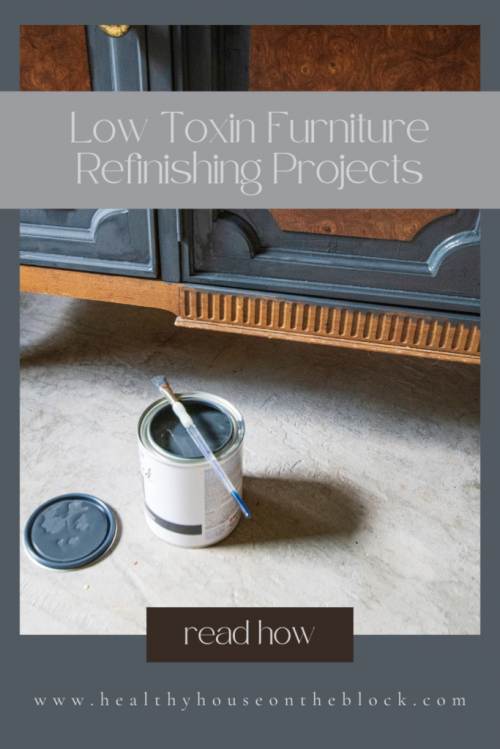
PURCHASING SECOND HAND FURNITURE AND FURNISHINGS
While you could go and just grab anything, there are a few things you want to be cautious of when it comes to second hand furniture.
There definitely is more to be said about using this tactic to prevent introducing toxins and chemicals into your home. One rule of thumb with used furniture is this: BE CAUTIOUS AND DON’T FEEL OBLIGATED TO BUY.
If you’re purchasing from a seller, make sure you ask them these important questions:
- Is this piece of used furniture solid wood?
- Has it ever been in a smoking environment?
You can also ask other questions about the condition, but as for safety and health, these two questions above can tell you a lot. Solid wood furniture is ALWAYS better and is always going to be the BEST option. Wood furniture made of medium density fiberboard, plywood or particle board will oftentimes contain harsh chemicals and VOCs, including formaldehyde. We know that formaldehyde is a carcinogen and that it never stops off-gassing, no matter how old the furniture or solvent is.
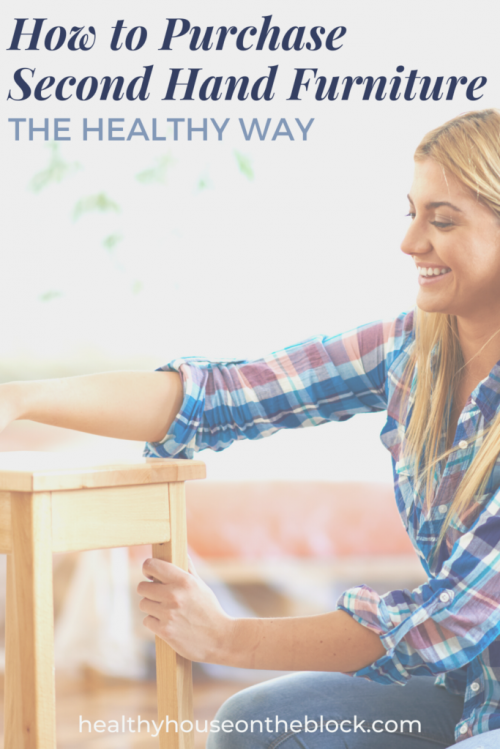
The reason I love taking advantage of used furniture for a home that is health conscious is that you can actually find really high quality pieces that contain fewer chemicals and toxins than furniture pieces you buy from a store. New pieces of furniture contain VOCs in the paints and glues that hold them together. In addition, manufacturing new pieces of furniture isn’t the best for our earth’s environment. The pieces have to be made and then shipped long distances. I talked a lot about this in my post about Fast Furniture, which you can read here.
Finding solid wood can be tricky, but it’s well worth it. Make sure you take your time in looking for a piece of used furniture and then make sure that you clean it and update it the right way.
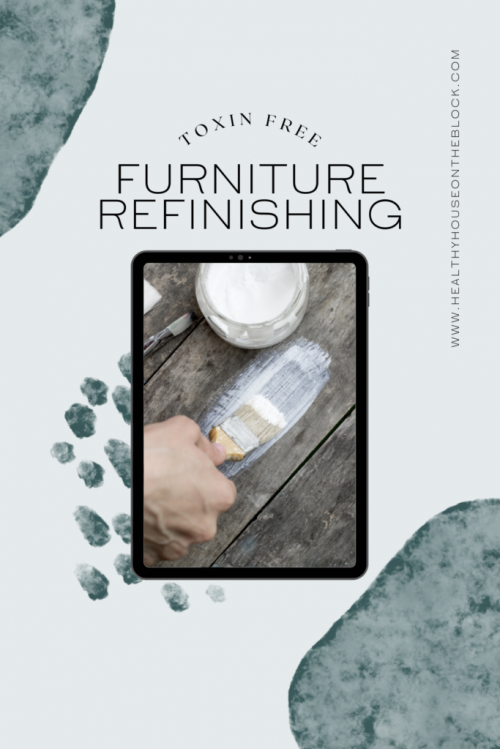
SET UP YOUR PROJECT THE RIGHT WAY
Whether you’re reusing a handed down piece of furniture, building your own or finding a thrift store item, creating a piece of DIY furniture is another exceptional way to cut down on waste, prevent chemicals from entering your home and being resourceful.
Before I had kids, I loved a good DIY furniture project and I loved creating items for our home. I turned to some online instructions to build bookshelves and transform thrift store pieces into cherished elements of our home.
While I still love doing these things, I have learned that there are definitely RIGHT ways to DIY furniture and wrong ways. I want to share with you some of the BEST ways you can work on your own furniture at home and the best ways you can prevent introducing toxins from your home with your next DIY furniture project.
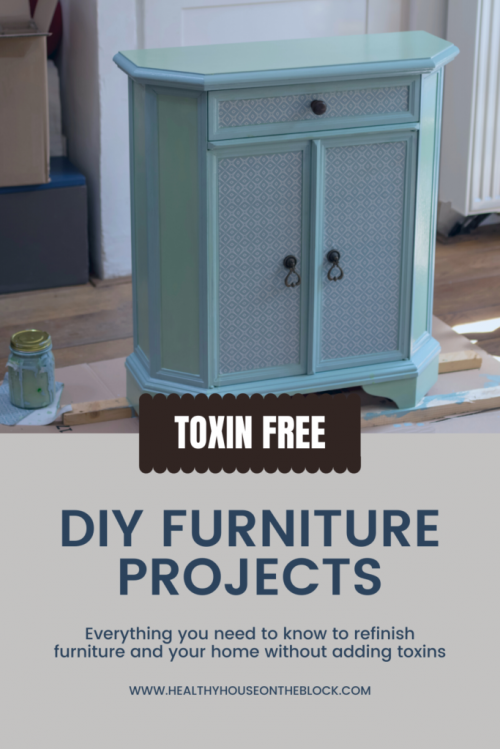
- Work Outside. Painting, sanding and staining should all be done outdoors or in a separate garage space if possible. This will help prevent introducing dust to your home (which will often contain chemicals from previous paint or stain on your furniture item).
- Wear a Mask. When sanding, it’s especially important to wear a mask. The fine dust particles you’re sanding off will contain VOCs from previous layers of paint or stain.
- Wear Gloves and Wash up Right Away. That fine sanding dust can end up in cuticles and on your skin, which will absorb the toxins, sending them to your bloodstream. Its a good idea to keep your hands covered with gloves as well as keeping your arms covered. If this isn’t possible or a good option, make sure to wash up right away.
- Use Safe and Natural Products when finishing your DIY furniture. You don’t want to be bringing furniture into your home that contains VOCs or other chemicals. After all the work you put into your project, make sure you’re using healthy finishing materials.
- Use Natural Wood Elements. So often when I see a project someone has done, they’ve added medium density fiberboard or other unnatural elements to the furniture in order to save money. Instead, try to use only natural wood if you need to repair the piece or you’re adding design elements.
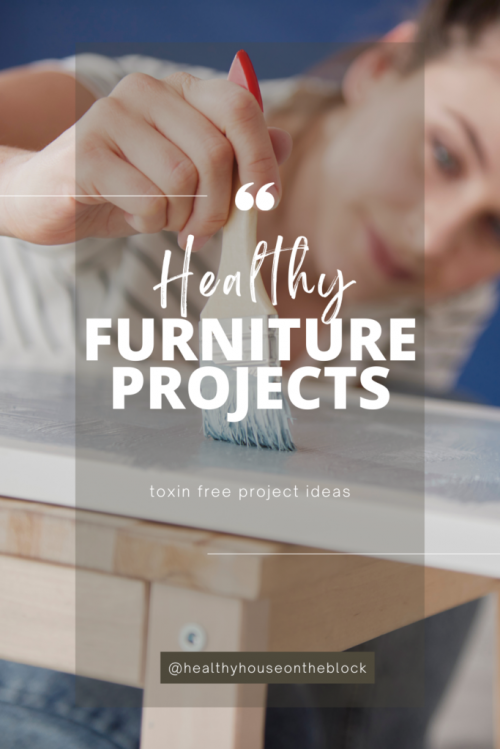
NATURAL PAINT REMOVERS
One of the reasons you want to be exceptionally careful when removing paint is because of the potential for toxins in the paint already on the project. Older paint could contain lead and most paint contains a variety of VOCs and toxins within it. When you’re removing paint with a sander or chipping it away, those toxins can become airborne, allowing you to inhale them into your lungs.
There are natural paint removers available, you just have to know what they are and where to get them. Which is so exciting given that this was not all that well known just a few years ago.

Soy Based Natural Paint Remover: Blue Bear Safenol can be used on any type of paint varnish or enamel and is low odor and 100% biodegradable. It can actually be used to remove lead paint as it encapsulates the lead as it removes it. It’s a fairly quick working product, which means less time of potential exposure.
Peeling Natural Paint Remover: Peel Away is a zero-VOC formula that is also a biodegradable product. It uses a mixture of lime and lye to remove paint on both indoor and outdoor items. It seems to work best on oil based paint rather than water based paints and varnishes. I found it cheapest at Ace Hardware if you have one nearby.
Alcohol Based Natural Paint Remover Dumond Smart Strip is another zero-VOC formula natural paint remover with benzyl as the active ingredient. This solution is 100% biodegradable and made for both indoor and outdoor use. There is a faint odor when used, so still be sure to wear a mask during removal. This is great for using most kinds of paints and varnishes with the exception of lead based.
FAVORITE HEALTHY FURNITURE PROJECT COMPONENTS:
Wood Stain:
Clear Sealant
Primer
Paint
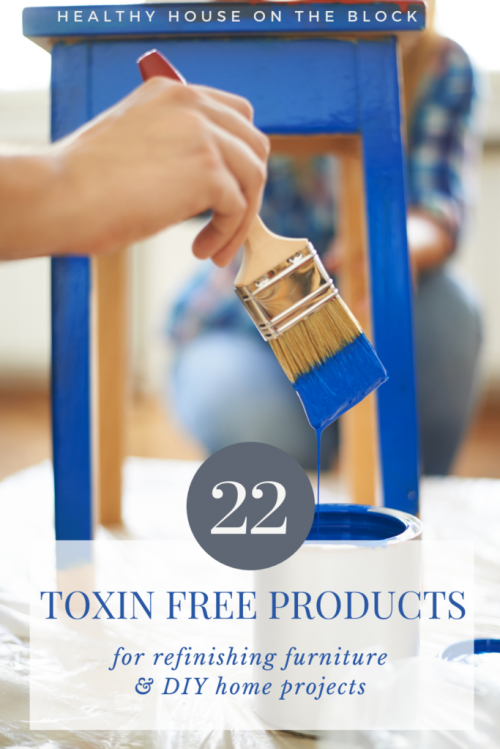
Wood Glue
Latex Foam
Upholstery Fabric
Additional Items
SHOWCASE OF MY FAVORITE PROJECTS
These are a few of my absolute favorite projects I’ve seen. You could use these as inspiration and use your own natural finishing products:
Choosing to reuse a piece of furniture, whether it’s your own or one you save, can not only be rewarding but it can also be a great way to reuse what you have instead of purchasing new. Now that there are so many options to refinish furniture in a healthy manner, I can’t wait to dive back into this world again.

